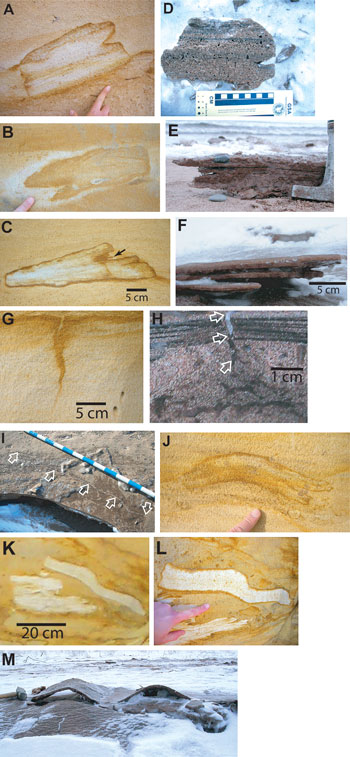
Figure 3.
Comparison of morphologies that characterize Furongian intraclasts (left) with ice-cemented clasts on the modern partially frozen shoreline. (A–F) Lamination-parallel wedge-shaped gaps that taper toward clast interiors. Clast in (C) also displays preservation of fine-scale, delicate, millimetric filigree (arrow). Furongian clast-edge filigree follows foresets of a frozen toe of a paleodune form; modern clast-edge filigree follows frozen swash laminations; left edge of hammer handle in (E) is 2 cm vertically. (G–I) Lamination-perpendicular, partly penetrating cracks: (G–H) cross-sectional views of clast interior and upper margin of clasts; (I) plan view for modern example only (10 cm increments on staff). Such cracks form on the modern shoreline where a thawing, undercut, frozen sand layer partly fails and subsequently refreezes. (J–M) Curvilinear clasts: (J) intraclast with wedge-shaped gaps that opened up along laminations; (K–L) intraclast with contiguous curves. Oblique, closer view (L) shows that laminae within clast conform to clast margins, indicating curviform shape resulted from deformation (bending or folding) of an originally tabular clast, rather than having originated as a curviform-outlined cemented area of cross-laminated sand. Relationships of such deformed intraclasts to host sandstone matrix show that deformation occurred prior to burial by Furongian swash action. Clasts along modern shoreline (M) deform similarly in the swash zone by freeze-thaw processes. Circular end of hammer on left is 4 cm in diameter.